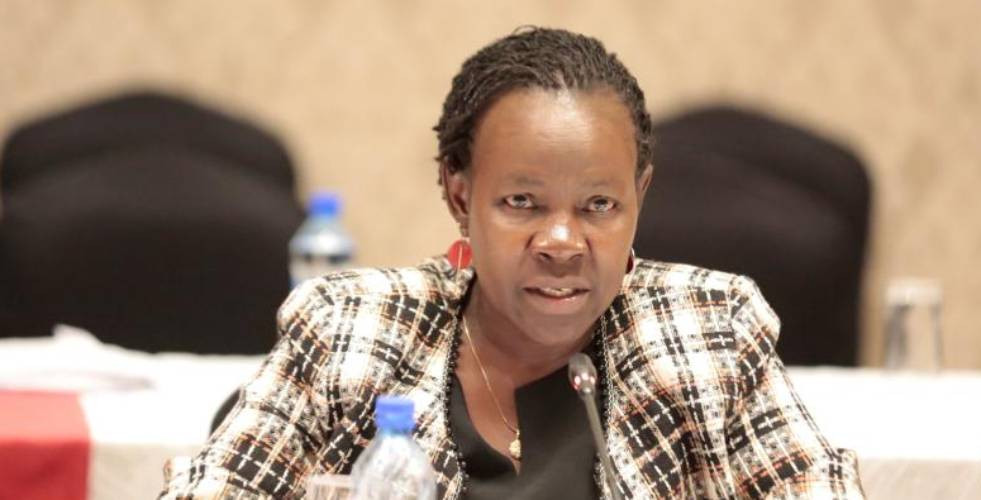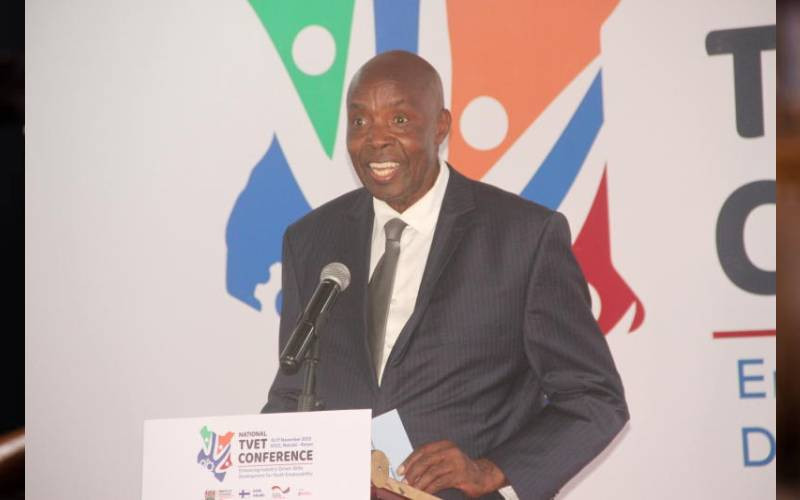From his office on the 19th floor of Anniversary Towers, Charles Ringera has a clear view of Nairobi University’s upcoming 21-storey Chandaria University of Nairobi Towers.
The Sh2.3 billion building — being constructed between the university’s Gandhi and Education buildings, and adjacent to Fairmont the Norfolk Hotel — will accommodate 3,000 students, the vice chancellor’s suite, senate boardroom, council meeting room and a helipad.
Mr Ringera’s other neighbours include another Nairobi University town campus, and two Kenya Methodist University campuses, both full of students streaming in and out of lecture rooms.
Constant reminder
As a parting gift to the country’s education sector, former President Mwai Kibaki upgraded several constituent colleges to fully fledged universities, which has seen the number of universities in the country more than double from about two dozen in 2010 to 68 today: 33 public and 35 private.
In addition, there are over 48 technical, industrial, vocational and entrepreneurship training institutions (TIVETs), and the Government plans to have one such institution in each of the 290 constituencies within two years.
To the man at the helm of the Higher Education Loans Board (HELB), the presence of so many universities next to him is a constant reminder of the pressures of his core business — financing higher education in Kenya.
A career banker for more than 22 years, Ringera has worked at KCB, Co-operative Bank and Central Bank of Kenya. He is also the chairperson of Kenya’s chapter of the Association of Chartered Certified Accountants (ACCA).
As a financier, administrator, banker and educator, Ringera — who last month celebrated his second year as CEO of HELB — says running a social fund in Kenya’s rapidly changing financial system has exposed him to numerous experiences.
From battling student leaders to haggling with the Treasury for more finances, he says his tenure has been more than challenging, but he glories in the daily task of restructuring the education financier to meet shifts in both the financial and educational sectors.
“I get a great deal of satisfaction from my job. Getting to see someone who cannot afford higher education come to you for a loan, get the funding, go through university, get a job and start repaying his loan is very encouraging and gives me a reason to come to work every morning,” he says.
“On the flipside, it is very taxing on our part as a semi-autonomous Government institution to get money from the Government when the State is burdened with a lot of pressures.
“On one hand, the Government is looking for money to fund healthcare, infrastructure and fight insecurity, and here you are with a bowl asking for more money. Sometimes it can be a very sobering experience.”
With a university student population that grows at more than 20 per cent year-on-year, HELB has been forced to look outside Government transfers and loan recoveries to its revolving fund for money, with varying levels of success.
An aggressive recovery plan three years ago that leveraged on technology has seen the fund raise its recovery rate exponentially.
Stay informed. Subscribe to our newsletter
First, the fund’s board managed to push through a clause in Chapter Six of the Constitution requiring those seeking public office to have repaid their HELB loans — this saw recoveries in the public service go up 247 per cent.
The financier further listed with various credit reference bureaus, which pushed recoveries up by another 300 per cent.
But this has not been enough.
“Next year, the fund will be 20 years old, and in this period, we have seen through over 430,000 graduates at a cost of Sh49.5 billion to the Exchequer,” says Ringera.
“Initially, money from the Government and the recoveries was enough to fund the students in the then seven universities and 15 constituent colleges, but with the number of institutions we are handling now, we need more money.”
In 2013, the number of students who attained the C+ cut-off grade required for university entrance was 123,000. This year, it has gone up to 150,000. In 2013, 244,000 students attained a C- and above, making them eligible for entry into a TIVET. This year, 300,000 students reached the cut-off.
“All these people will come to us when they need to finance their education, and we are compelled by law to give them this money regardless of our financial position,” says Ringera.
The original structure of the HELB Act 1995, which birthed the fund, gives Ringera and his team a short leash in terms of sourcing for finance to grow its loan book.
For instance, HELB has for more than five years been trying to go to the capital markets through an edu-bond, but the regulations of the Act do not provide for this.
Development finance
It is now working on reviewing this legislation, and by June, expects to bring a Bill to the floor of the House that would transform HELB into a fully fledged development finance institution (DFI).
“Once this is complete, we have some proposals, including offshore issuances, raising capital using savings from Kenyans and also going to the securities exchange.”
But unlike commercial financial institutions, HELB is limited in one important aspect: educational loans are pegged at 4 and 12 per cent interest rates for undergraduate and post-graduate students, respectively.
This low interest regime was put in place to ensure the fund makes just enough money on top of the principal amount to help meet administrative costs. It is thus inconceivable for the fund to go to the securities exchange with a pricing model that cannot guarantee returns to investors.
There has, therefore, been concern that if the fund transforms into a DFI, the interest rate might be hiked, denying thousands of needy students a source of higher education financing.
“We have heard that argument ... but I want to assure students that this is not the case,” says Ringera.
“It is clear in our mandate that we can never change our interest from the current 4 per cent unless Cabinet approves or recommends this, and there is no indication of this at the moment.”
Ringera has one other proposal that could solve the issue of financing higher education.
“If every Kenyan could give me Sh1, 000, that would be about Sh40 billion, which is more than enough to fund higher education in this country. I know this is not going to happen tomorrow or next week, but it is a process and an ongoing conversation that we need to keep having.”
 The Standard Group Plc is a
multi-media organization with investments in media platforms spanning newspaper
print operations, television, radio broadcasting, digital and online services. The
Standard Group is recognized as a leading multi-media house in Kenya with a key
influence in matters of national and international interest.
The Standard Group Plc is a
multi-media organization with investments in media platforms spanning newspaper
print operations, television, radio broadcasting, digital and online services. The
Standard Group is recognized as a leading multi-media house in Kenya with a key
influence in matters of national and international interest.
 The Standard Group Plc is a
multi-media organization with investments in media platforms spanning newspaper
print operations, television, radio broadcasting, digital and online services. The
Standard Group is recognized as a leading multi-media house in Kenya with a key
influence in matters of national and international interest.
The Standard Group Plc is a
multi-media organization with investments in media platforms spanning newspaper
print operations, television, radio broadcasting, digital and online services. The
Standard Group is recognized as a leading multi-media house in Kenya with a key
influence in matters of national and international interest.








